1 RCNY §5000-01
CHAPTER 5000
New York City Energy Conservation Code
§5000-01 Construction document approval requirements for compliance with the New York City Energy
Conservation Code.
(a) Purpose. This section sets forth the requirements for filing and approval of construction documents and the
universe of progress inspections during construction, in accordance with the New York City Energy Conservation
Code.
(b) References. See 2020 New York City Energy Conservation Code (Administrative Code Sections 28-1001.1 et
seq.); 2020 New York State Energy Conservation Construction Code (19 NYCRR part 1240); Administrative
Code Section 28-104.7.9, Sections BC107.13 and BC110.3.5, Mechanical Code, and Fuel Gas Code; 1
RCNY §101-07 (“Approved Agencies”).
(c) Definitions. For the purposes of this chapter, the following terms shall have the following meanings:
ABOVE-GRADE WALL. An above-grade wall as defined in the Energy Code. This definition differs in the
residential provisions and the commercial provisions of the Energy Code.
ADDITION. An addition as defined in the Energy Code.
APPROVED PROGRESS INSPECTION AGENCY. An approved progress inspection agency as described
in subparagraph (iii) of paragraph (3) of subdivision (c) of section 101-07 of the rules of the Department.
ASHRAE 90.1. ASHRAE 90.1-2016 (as amended) as defined in the Energy Code.
COMMERCIAL BUILDING. A commercial building as defined in the Energy Code.
DESIGN APPLICANT. An applicant of record who develops, signs and seals the construction drawings. The
design applicant may be someone other than the registered design professional who prepares, signs and seals the
energy analysis.
ENERGY CODE. The New York City Energy Conservation Code (“ECC”), as defined in Chapter 10 of Title
28 of the Administrative Code.
GRADE PLANE. A grade plane as defined in the Energy Code. This definition differs from the Building Code
definition of Grade Plane.
HISTORIC BUILDING. An historic building as defined in the Energy Code.
PROJECT. A project as defined in the Energy Code.
REGISTERED DESIGN PROFESSIONAL. A registered design professional as defined in the Energy Code.
RESIDENTIAL BUILDING. A residential building as defined in the Energy Code.
STORY. A story as defined in the Energy Code. This definition differs from the Building Code definition of
Story.
STORY ABOVE GRADE PLANE. A story above grade plane as defined in the Energy Code. This definition
differs from the Building Code definition of Story Above Grade Plane.
SUSTAINABLE ROOFING ZONE. A sustainable roofing zone as defined in Chapter 15 of the Building
Code. Note that this is a Building Code requirement and not an Energy Code requirement.
THERMAL BRIDGE. A thermal bridge as defined in the Energy Code.
(d) Applicability.
(1) Applicable version and edition of Energy Code. Applications must comply with the Energy Code version
and edition in effect when the application is filed, continuing through construction and sign-off of the
application by the Department.
(2) Residential building projects. All applications related to a single residential building project must follow
ECC Chapters R2 through R6.
(3) Commercial building projects. All applications related to a single commercial building project must follow
either ECC Chapters C2 through C6 or ASHRAE 90.1 in its entirety.
(i) ECC Compliance Path. Vertical fenestration is allowed up to 30% of the gross above-grade wall area,
prescriptively. Commercial buildings with vertical fenestration exceeding 30% of the above-grade wall
must provide daylighting controls in required daylight zones in accordance with ECC provisions to a

maximum fenestration area of 40% of the gross above-grade wall area. Alternatively, commercial
buildings with vertical fenestration exceeding the prescriptive requirements for maximum vertical
fenestration area may show compliance using the Component Alternative Method in Section C402.1.5,
through the use of COMcheck.
(ii) ASHRAE 90.1 Compliance Path. Vertical fenestration is allowed up to 40% of the gross wall area,
prescriptively. If the vertical fenestration exceeds 40% of the gross wall area, the design team must use
energy modeling in accordance with Section 11 of ASHRAE 90.1 (“Energy Cost Budget Method”) or
Appendix G of ASHRAE 90.1 (“Performance Rating Method”) and as provided in subparagraph (iv) of
paragraph (1) of subdivision (f) of this section or Section 5.6 of ASHRAE 90.1 (“Building Envelope
Trade-off Option”).
(iii) Additional requirements in Section 11 and Appendix G. For new buildings 25,000 square feet and
greater in area, and which follow Section 11 or Appendix G, additional requirements must be satisfied
to demonstrate compliance with Section 5.2.3. The building envelope must comply with either Section
5.5 of ASHRAE 90.1 (“Prescriptive Building Envelope”) or the applicant must calculate an envelope
performance factor in accordance with Appendix C of ASHRAE 90.1 that meets certain thresholds
dependent on the occupancy of the building.
(4) Identification of related applications. Applicants must indicate in the application form all applications
related to the project or, if an application has not yet been filed, the name of the applicant or the applicant’s
firm and discipline for any anticipated related applications.
(e) Professional statement. Every application filed by a registered design professional for approval of construction
documents for a new building or alteration shall include a professional statement of either compliance with or
exemption from the Energy Code.
(1) Compliance. All new building and alteration applications must indicate compliance on the application form,
except as specifically excluded in paragraph (2) of this subdivision.
(2) Exemption. Only applications that consist entirely of work exempt from the Energy Code may indicate
exemption in the professional statement. The application must state one of the following bases for exemption:
(i) Historic building. Any alteration to an historic building is exempt. Any addition to an historic
building is not exempt, and must meet the requirements of the ECC for new construction.
(ii) Envelope of low-energy building. All the proposed work is related to the envelope system of a low-
energy, unconditioned building, or equipment building as described in ECC Chapter C4 or ECC Chapter
R4.
(iii) Categories of work not affecting energy use. Temporary structures (as described in sections 28-111
and BC 3103) are exempt from compliance with the Energy Code. In addition, the following work types
are exempt: fire alarm, fire suppression in a range hood, standpipe, sprinkler, fuel storage, construction
equipment, curb cut, fire protection plan, sidewalk shed, supported scaffold, fence, place of assembly,
temporary place of assembly, earthwork, support of excavation, builder’s pavement plan, protection
means and methods, suspended scaffold, subdivision, full demolition, and cranes. Other work types are
not exempt.
(iv) Post-approval amendment. A post-approval amendment for a job that was exempt under a prior
edition of the Energy Code.
(f) Energy analysis. An energy analysis is required for every project that is not entirely exempt. The energy analysis
must identify the compliance path followed, demonstrate how the project design complies with the Energy Code
and, for commercial projects, indicate whether the project is designed in accordance with ECC Chapters C2
through C6 or with ASHRAE 90.1.
(1) Accepted formats for energy analysis. Tabular analysis along with COMcheck or REScheck may be used
for different disciplines in the same application, as long as the compliance paths are identical. The following
formats may be used to present the energy analysis:
(i) Tabular analysis. For new buildings, additions and/or alterations to existing residential or commercial
buildings for which either ECC Chapters R2 through R6, ECC Chapters C2 through C6 or ASHRAE
90.1 has been used, and the applicant is complying prescriptively, the applicant may include a table
entitled “Energy Analysis” as described in figure 1.
Such table must compare the proposed values of each Energy Code regulated item in the scope of work
with the respective prescriptive values required by the Energy Code. The items must be organized by

discipline, including Envelope Systems, Mechanical and Service Water Heating Systems, Lighting and
Electrical Systems, Additional Efficiency Options, and Commissioning as applicable.
For commercial building additions and/or alterations involving lighting, the applicant may choose to
utilize the Lighting Application Worksheet from COMcheck for the lighting part of the analysis in lieu
of including lighting in the tabular analysis; however, the supporting documentation index must provide
a breakdown of each lighting fixture to clarify the location per room type or floor. See subparagraph (iii)
of this paragraph and Figure 2 in subdivision (g) of this section.
Figure 1: Sample tabular energy analysis:
ENERGY ANALYSIS
Code chapter and/or standard used for design
Climate Zone 4A
Item Description
Code Prescriptive Value
& Citation
Proposed Design Value
Supporting
Documentation
(List all elements of the
scope of work in the detail
that they are addressed by
the energy code.)
List the prescriptive value
required by the Energy
Code and provide the
citation for such value.
List the value used in the
design.
Indicate where in the
drawing set the
information is to be
found.
(ii) REScheck Software Program. The REScheck software program available from the United States
Department of Energy website may be used for residential buildings as follows:
(A) New buildings. REScheck may be used for new residential buildings.
(B) Additions. REScheck may be used for additions. Only the new portions of the building shall be
input into the software.
(C) Alterations and repairs. REScheck may be used for alterations and repairs. Only the components
being altered shall be input into the software.
(D) REScheck version.
1. For applications filed on or after May 12, 2020, the report must specify the 2020 New York
City Energy Conservation Code.
2. For applications filed before May 12, 2020, the report must specify the edition of REScheck
that matches the edition of the New York City Energy Conservation Code in effect when the
application was filed. If a New York City-specific version is no longer supported, the report
must specify the applicable IECC version of the software.
(iii) COMcheck Software Program. The COMcheck software program available from the United States
Department of Energy website may be used for commercial buildings as follows:
(A) New buildings. COMcheck may be used for new commercial buildings.
(B) Additions. COMcheck may be used for additions. Only the new portions of the building shall be
input into the software.
(C) Alterations and repairs. COMcheck may be used for alterations and repairs. Only the components
being altered shall be input into the software.
(D) COMcheck versions.
1. For applications filed on or after May 12, 2020, the report must specify the edition of
COMcheck that matches the edition of the New York City Energy Conservation Code or
ASHRAE 90.1 in effect when the application was filed.
2. For applications filed before May 12, 2020, the report must specify the edition of COMcheck
that matches the edition of the New York City Energy Conservation Code in effect when the
application was filed. If a New York City-specific version is no longer supported, the report
must specify the applicable IECC or ASHRAE 90.1 version of the software, as determined by
the Department.
(iv) Energy modeling. For new commercial buildings and additions or alterations to commercial buildings,
where the performance path is used in accordance with ASHRAE 90.1 section 11 or Appendix G, an
energy modeling program developed by the United States Department of Energy, including DOE2 or
updates of DOE2, shall be used; such updates include DOE2.1E, VisualDOE, EnergyPlus and eQuest.
Other energy modeling programs must be approved by the Secretary of State of New York State and the
commissioner. The commissioner may at his or her discretion require the energy modeling report to be
submitted to the Department.
All applications must provide a Supporting Documentation Index indicating the mandatory measures,
an energy modeling form, and energy modeling reports.
Additional envelope requirements for buildings 25,000 square feet and greater. Additionally, for
applications 25,000 square feet and greater, a ComCheck Envelope Compliance Certificate, using
ASHRAE 90.1, must be submitted along with the energy modeling reporting to ensure compliance with
additional envelope provisions.
The applicant shall provide the project-relevant utility company energy cost time-of-use rate structure in
effect on January 1 of the calendar year in which the initial filing of the project application(s) occurs,
and shall utilize the time-of-use electricity, gas and steam prices from the rate structure in the energy
model. Fuel oil prices used in the model shall be supported by comparable local supplier information
from the provider in effect on January 1 of such calendar year.
The results of the energy modeling report must be reported on a Department form.
(v) Alternative formats. Formats other than those listed in subparagraphs (i) through (iv) of this paragraph,
including, but not limited to, the home energy software programs described in section ECC 101.5.1, may
be used for a project only if they are approved in advance by both the Secretary of State of New York
State and the commissioner.
(2) Mixed-occupancy buildings three stories or fewer. In accordance with section ECC 101.4.1, buildings
three stories or fewer above grade plane with mixed residential and non-residential occupancies must comply
with the respective requirements of Chapters R2 through R6 and Chapters C2 through C6 or ASHRAE 90.1,
and must have separate energy analyses, except that a tabular analysis format or energy modeling may be
used to show both the residential and non-residential requirements.
(3) Build-outs of tenant space prior to issuance of new building certificate of occupancy. The energy
analysis for any alteration application for a build-out of a new building tenant space before the final certificate
of occupancy is issued must be consistent with the compliance path for the new building. Such energy
analysis for the new building must be provided upon request.
(4) Professional responsibility for energy analysis. The energy analysis must be signed and sealed by
registered design professional(s).
(i) Election. The project team must elect one of the following methods for performing the energy analysis:
(A) Responsibility by discipline. Where each system of the energy analysis – envelope,
mechanical/service water heating and lighting/power – meets the prescriptive requirements of the
Energy Code individually, different registered design professionals may sign and seal their
respective parts of the energy analysis report and include them as follows:
1. If all such systems are filed with the Department under the same application number, each
registered design professional may include his or her part of the energy analysis in his or her
respective parts of the project construction drawings.
2. If such systems are filed with the Department under different application numbers, each part of
the energy analysis in the related applications must utilize the same compliance path; except
that in the case of foundation and earthwork permits issued pursuant to section 28-104.2.5, the
energy analysis for the new building project must be submitted with subsequent construction
documents. Refer also to paragraph (5) of this subdivision.
(B) Lead professional. Where energy modeling (whole-building analysis) is performed for the energy
analysis and the envelope, mechanical/service water heating and lighting/power do not meet the
prescriptive requirements of the Energy Code on their own, a lead professional must be identified
who must sign and seal the entire energy analysis for all systems involved.
The energy modeling program must be based on energy modeling software in accordance with
subparagraph (iv) of paragraph (1) of this subdivision. The energy analysis must be presented in
the construction drawings for one application only. The lead professional must be a registered
design professional and need not be a design applicant.

(ii) Registered design professional other than a design applicant. A registered design professional other
than a design applicant may prepare, sign and seal the energy analysis, either as lead professional or for
individual discipline(s) in accordance with subparagraph i of this paragraph.
(5) Foundation and earthwork permits. When phased or partial approval is requested by the applicant for the
purpose of issuance of a foundation and earthwork permit in accordance with §28-104.2.5 of the
Administrative Code, a tabular analysis must be filed showing the foundation insulation requirements of the
ECC. Refer also to subclause 2 of clause (A) of subparagraph (i) of paragraph (4) of this subdivision.
(g) Supporting documentation. The construction drawings submitted for approval must provide all energy design
elements and must match or exceed the energy efficiency of each value in each part of the energy analysis –
envelope, mechanical/service water heating and lighting/power. The supporting documentation must be listed in
a table that serves as an indexing guide to the construction document set. Such table must list the proposed values
of each Energy Code-regulated item in the scope of work with the respective location in the drawing set. Such
table is not required if the location of the supporting documentation is included in a column as shown in the
Tabular Analysis described in figure 1.
Figure 2: Sample Supporting Documentation Index:
SUPPORTING DOCUMENTATION INDEX
Code chapter and/or standard used for design
Climate Zone 4A
Code Section
Item Description
Supporting Documentation
Location
List specific code
section
List all elements of the scope of work in the detail
that they are addressed by the energy code.
List the drawing page number
and/or section title.
For additions, the construction documents must clearly show in the supporting documentation, the new construction
as it relates to existing conditions. For alterations, the construction documents must clearly show in the supporting
documentation those physical portions of the systems that are being brought up to code and those that are not being
altered.
Further, supporting documentation must provide all information necessary for a progress inspector to verify during
construction that the building has been built in accordance with the approved construction documents to meet the
requirements of the Energy Code.
In addition, other mandatory Energy Code requirements must be provided as described in paragraphs (1) through (7)
of this subdivision. This is not an exhaustive list.
(1) Envelope. Building wall sections and details must be provided for each unique type of roof/ceiling, wall,
and either the foundation, slab-on-grade, basement or cellar assembly. Such building wall sections shall
show each layer of the assembly, including, but not limited to, insulation, moisture control and air barriers.
If continuous insulation is indicated, it must be fully continuous, uninterrupted by framing, slab edges, shelf
angles, or any other continuous breaks in the insulation. The insulation in each case must be labeled and must
be equal to or greater than the R values, and an assembly in each case must be equal to or less than the
assembly U factors, in the energy analysis.
(i) Fenestration. Door, window and skylight schedules must include columns for U-factors, VT and
SHGC values for each fenestration assembly type, and such values must be equal to or less than
those in the energy analysis. For commercial buildings, the building elevation must indicate a
demarcation line at 95 feet. Fenestration located below 95 feet must be clearly identified on
construction documents. For any portion of a fenestration assembly that is above 95 feet, the entire
fenestration assembly may comply with the U-factor requirements for fenestration 95 feet and
above. Mandatory requirements to prevent air leakage shall be detailed.
(ii) Spandrel assemblies. Spandrel assemblies are considered opaque walls. The U-factor for the
proposed design must be that which is defined in the Energy Code, according to the frame type,
spandrel assembly, and rated R-value of insulation between framing members. If a spandrel
assembly is not described within the Energy Code, or contains insulation values outside of the range

of rated R-values, the designer will be required to provide simulation of the wall assembly, using
software such as THERM.
(iii) Thermal bridging. Construction documents must include information on clear field, point, and
linear thermal bridges. Clear field thermal bridges, such as brick ties, cladding, studs, must be de-
rated using Appendix A of ASHRAE 90.1. If the assembly is not identified in Appendix A of 90.1,
such as Z-girts, then these assemblies must be noted in the drawings, accompanied by supporting
documentation indicating the de-rated value. Individual point thermal bridges, such as structural
beam penetration through insulation, larger than 12in
2
in commercial buildings and larger than 8in
2
in residential buildings must be identified on the construction documents. Linear thermal bridges
specifically identified in the ECC, such as shelf angles, slab edges, balconies, parapets, window
interfaces, must be identified both on elevation plans and in a tabular format as shown in figure 3.
Each linear thermal bridge type must have a relevant detail showing the cross-section through the
thermal bridge.
Figure 3: Sample Linear Thermal Bridge Documentation
Linear Thermal
Bridge Type
Total Length
Detail Location
Ψ-value
List all applicable
thermal bridges that are
identified in Table
C402.6, R402.6 or 90.1
Table 5.4.4
List aggregate length of
each type of thermal
bridge.
List the drawing page
number and/or section
title.
List unmitigated Ψ-value
directly from Table
C402.6, R402.6 or 90.1
Table 5.4.4.
Alternatively, provide
Ψ-value with supporting
documentation and/or
calculations, if differing
from default value
above.
(2) Mechanical/service water heating. Mechanical system design criteria, and mechanical and service water
heating system and equipment types, sizes and efficiencies shall be provided with coordinated naming
convention between the mechanical schedule and the energy analysis. For commercial buildings, the total
installed space cooling capacity, the total installed space heating capacity, and the total installed service hot
water capacity must be listed on the drawings. For all new construction, the ventilation system design must
be included in the construction documents in accordance with the requirements in the ECC.
Space heating and cooling equipment, energy recovery equipment, economizers, ventilation equipment,
service water heating equipment, and mandatory requirements including control systems, duct sealing and
duct and piping insulation must be shown on the construction drawings and must be equal to or greater than
the energy efficiency requirements established in the energy analysis, the Energy Code and/or this section,
as applicable. A narrative must be provided for each mandatory control system describing its function and
operation and specifying proper setpoints of equipment and controls.
For new buildings, the construction documents must indicate the method of compliance for the supply of
heated water and clearly show the service water heating distribution system meeting the specified
requirements. Sloped drain water heat recovery units that comply with IAPMO PS 92 and are tested and
labeled in accordance with IAPMO 346, are deemed to comply.
(3) Electrical. The applicant must provide supporting documents for lighting, power and controls on either
electrical drawings or drawings of other disciplines as appropriate. Such documents must:
▪ support the energy analysis;
▪ satisfy mandatory requirements of the Energy Code, such as controls, transformers, metering, voltage
drop, elevator, commercial kitchen equipment, and electric motor requirements; and
▪ support progress inspections required by this section.
The drawings must be numbered with an “E,” “EN” or other discipline designator and must be signed and
sealed by a registered design professional. If the registered design professional is an electrical engineer, the
engineer must file in a form and manner prescribed by the commissioner.
(i) Interior and exterior lighting. Supporting documentation for lighting must be as follows:
(A) Commercial buildings, except within dwelling units. The applicant must provide reflected ceiling
plans, floor plans and/or electrical drawings with lighting layouts for each floor or space in the
project, and for exterior lighting as applicable. Control devices and zones shall be indicated on
drawings.
The lighting fixtures must be described and keyed to the lighting plans, including type designation,
brief description, locations, lamp type, ballast/transformer type, watts per lamp, quantity of lamps
per fixture, and system input watts per fixture, such that the drawings support the energy analysis.
Lighting controls must be shown and described on a schedule, and a narrative provided describing
their function and operation.
(B) Dwelling units in residential and commercial buildings. In homes and dwelling units, the
applicant must indicate on floor plans what fixtures are to be installed with high-efficacy lamps, and
where the separate meter for each dwelling unit is located.
(ii) Exterior lighting zones. Exterior lighting zones as set forth in ECC Table C405.4.2(1) correspond with
the following zoning districts in the New York City Zoning Resolution:
Lighting zone 1: Park land.
Lighting zone 2: All R districts, R districts with C overlays and MX districts.
Lighting zone 3: M districts, except MX; C districts, except C5, C6 and C overlays on R districts.
Lighting zone 4: C5 and C6 districts.
(iii) Electrical motors and controls. Electrical motor horsepower and controls must be shown on the
drawings and described.
(iv) Metering. Projects requiring electrical submetering and/or monitoring must clearly indicate on the
drawings that submetering and/or monitoring will be provided in accordance with the Energy Code.
Projects requiring whole building fuel use metering must clearly indicate on the drawings that whole
building fuel use metering will be provided in accordance with the Energy Code.
(v) Automatic receptacle controls. For applications using ASHRAE 90.1, certain receptacles must be
automatically controlled and clearly shown on the drawings in accordance with ASHRAE 90.1.
(vi) Electric vehicle service equipment capable. New residential buildings with parking areas must
indicate on the construction documents the method of compliance for the future installation of electric
vehicle service equipment in accordance with the Energy Code and the Building Code, as applicable.
(vii) Elevators and escalators. For applications with elevators, the construction documents must provide
the efficiency class and usage category. For new building applications with elevator shafts rising 75
feet or more must provide documentation showing compliance with regenerative drives, as applicable.
For applications with escalator installations must provide documentation showing compliance with
regenerative drives, as applicable.
(viii)Commercial kitchen equipment. For applications with certain commercial kitchen equipment, the
construction documents must provide the type of equipment, the minimum performance value, and the
design specification value in accordance with the ECC.
(4) Permanent certificate in residential buildings. For residential buildings and commercial R-3 buildings,
the construction documents must indicate the following in accordance with Section ECC R401.3:
(i) New buildings. For new buildings, a permanent certificate must be installed indoors and in accordance
with Sections ECC R401.3, except that it may be posted near the electrical distribution panel at eye level
and in plain sight.
(ii) Additions and alterations. For additions and alterations affecting information on an existing permanent
certificate, such permanent certificate must be updated, initialed where changed and reposted such that
the values on the posted permanent certificate remain current. For additions and alterations where a
permanent certificate was not previously required, a new permanent certificate must be provided with
the values applicable to the scope of work and posted on a permanent certificate that complies with the
new building requirements.
(5) Other mandatory requirements. The construction documents must comply with all mandatory
requirements of the Energy Code.
(i) For residential buildings, references for such requirements are listed throughout Chapters R2 through
R6.
(ii) For commercial buildings complying with the provisions of ECC Chapters C2 through C6, references
for such requirements are set forth throughout Chapters C2 through C6; for commercial buildings
complying with ASHRAE 90.1, such requirements are set forth throughout the standard.
(iii) Commissioning documentation requirements. The construction documents for each commercial
building must show the following:
(A) Professional statement. Every application filed by a registered design professional for approval of
construction documents for a new building or alteration under the commercial provisions of ECC
or ASHRAE 90.1 must include a statement of either compliance with or exemption from the
commissioning requirements of the Energy Code. The total installed space cooling capacity, the
total installed space heating capacity and the total installed service hot water capacity must be listed
on the drawings, as well as all the building systems that require commissioning, as applicable. For
alteration applications, the total connected load of the HVAC distribution equipment that is within
the scope of work must be listed on the drawings.
(B) Commissioning Plan. The commissioning plan requirements may be described in the construction
documents, or the construction documents may refer to specifications. The specifications may be
requested by the department.
(C) Equipment specifications. The construction documents must show the location of all equipment
requiring commissioning, along with the performance data for each piece of equipment.
(D) Operating and maintenance manual. A statement that the owner shall receive an operating and
maintenance manual for the HVAC equipment requiring commissioning within 90 days of the date
of receipt of the Certificate of Occupancy or letter of completion.
(E) Balancing report. A statement that the owner shall receive a systems balancing report for the
HVAC equipment requiring commissioning within 90 days of the date of receipt of the Certificate
of Occupancy or letter of completion.
(iv) Air leakage and air barrier testing statement. The construction documents for each new building or
additions greater than 10,000 square feet in area must provide information relating to the air barrier
testing compliance with the Energy Code. A continuous air barrier location be shown on the elevation
and section drawings and in each envelope assembly detail.
(A) Residential buildings. New buildings required to comply with the residential provisions of the
Energy Code, must include a statement of compliance with the air leakage rate testing requirements
of the Energy Code.
(B) Commercial buildings. New buildings or additions, required to comply with the commercial
provisions of the Energy Code, must indicate compliance with one of the following three air barrier
requirements:
1. Visual inspection. Only commercial buildings less than 10,000 square feet may comply with
visual inspection. The continuous air barrier for the opaque envelope must indicate compliance
with the material or assemblies in the Energy Code.
2. Whole building air barrier testing. Buildings 10,000 square feet and greater, but less than 50,000
square feet and 75 feet in height or less must include a statement of compliance with the air
leakage rate testing requirements of the Energy Code. For buildings not required to comply
with testing, and instead choose to comply voluntarily with whole building air barrier testing
must include a statement of compliance with the air leakage rate testing requirements of the
Energy Code.
3. Air barrier continuity plan. Buildings 10,000 square feet and greater but less than 50,000 square
feet, which are greater than 75 feet in height, and for buildings greater than 50,000 square feet
must include a statement of compliance with the Air Barrier Continuity Plan requirements of
the Energy Code. The construction documents must indicate each unique air barrier joint or
seam to be tested along with the recommended method of testing.

(5) Deferred submittals. Drawings showing design intent and performance criteria matching those in the energy
analysis may be submitted as supporting documentation provided that, in accordance with Section 28-104.2.6
of the Administrative Code, the applicant lists such deferred submittals in the construction drawings and
submits them for approval prior to installation or construction. If required, the energy analysis must be
updated when deferred submittals are provided for approval.
(6) Required progress inspections. Supporting documentation must set forth all applicable required progress
inspections in accordance with the Energy Code, 1 RCNY §101-07 and this section.
(i) Applicant’s instructions regarding required progress inspections. Progress inspections required to
be performed during construction for any new building, addition or alteration project must be identified
by the design applicant according to the scope of work and listed and described in the approved
construction drawings as required progress inspections.
The description must show the standard of construction and the inspection criteria as appropriate for the
scope of work in accordance with Table I or Table II of subdivision (h) of this section, as applicable;
simple reference to the citations provided, without such description, is not sufficient.
The applicant must include the instruction that, in accordance with Chapter 1 of the Building Code and
ECC 104.2.3, where an inspection or test fails, the construction must be corrected and must be made
available for reinspection and/or retesting by the progress inspector until it complies.
For additions and alterations, the applicant must clearly indicate what portions of the altered systems
must be inspected and/or tested, and what inspection and/or testing may be outside the scope of the work.
(ii) Construction scheduling instructions. The drawings must state that, in accordance with Article 116
of Title 28 and Section BC 110, construction must be scheduled to allow required progress inspections
to take place, and that roofs, ceilings, exterior walls, interior walls, floors, foundations, basements and
any other construction shall not be covered or enclosed until required progress inspections are completed
or the progress inspector indicates that such covering or enclosure may proceed, at each stage of
construction, as applicable.
(iii) Commercial building reference standards and citations. Progress inspection reference standards and
citations must conform to the respective requirements of ECC Chapters C2 through C5 or ASHRAE
90.1 as used for design, in accordance with the following:
(A) When ECC Chapters C2 through C5 have been used for the project design, as reflected in the energy
analysis, the applicant must list on the drawings the respective references and citations for ECC for
the progress inspection.
(B) When ASHRAE 90.1 has been used for the project design, as reflected in the energy analysis, the
applicant must list on the drawings the respective references and citations for ASHRAE 90.1 for the
progress inspection.
(h) List of progress inspections required. The following progress inspections and/or testing set forth in Tables I
and II shall be required when applicable to the scope of work and shall be identified/described in the supporting
documentation and included on the drawings submitted to the Department. Energy Code sections cited in Tables
I and II of this section shall be understood to include the section, all subsections, all tables and, when ASHRAE
90.1 is used, appendices related to the cited Energy Code section.
(1) Residential buildings. The progress inspections and tests described in Table I must be performed for
buildings regulated by ECC Chapters R2 through R6. For heating, cooling and/or service hot water systems
in multiple dwellings, including where such systems serve a single dwelling unit, the applicant must list
inspections, tests and citations from Table II, in accordance with Section ECC R403.8.
TABLE I – PROGRESS INSPECTIONS FOR ENERGY CODE COMPLIANCE – RESIDENTIAL
BUILDINGS
Inspection/Test
Frequency
(minimum)
Reference Standard
(See ECC Chapter
R6) or Other
Criteria
ECC or Other
Citation
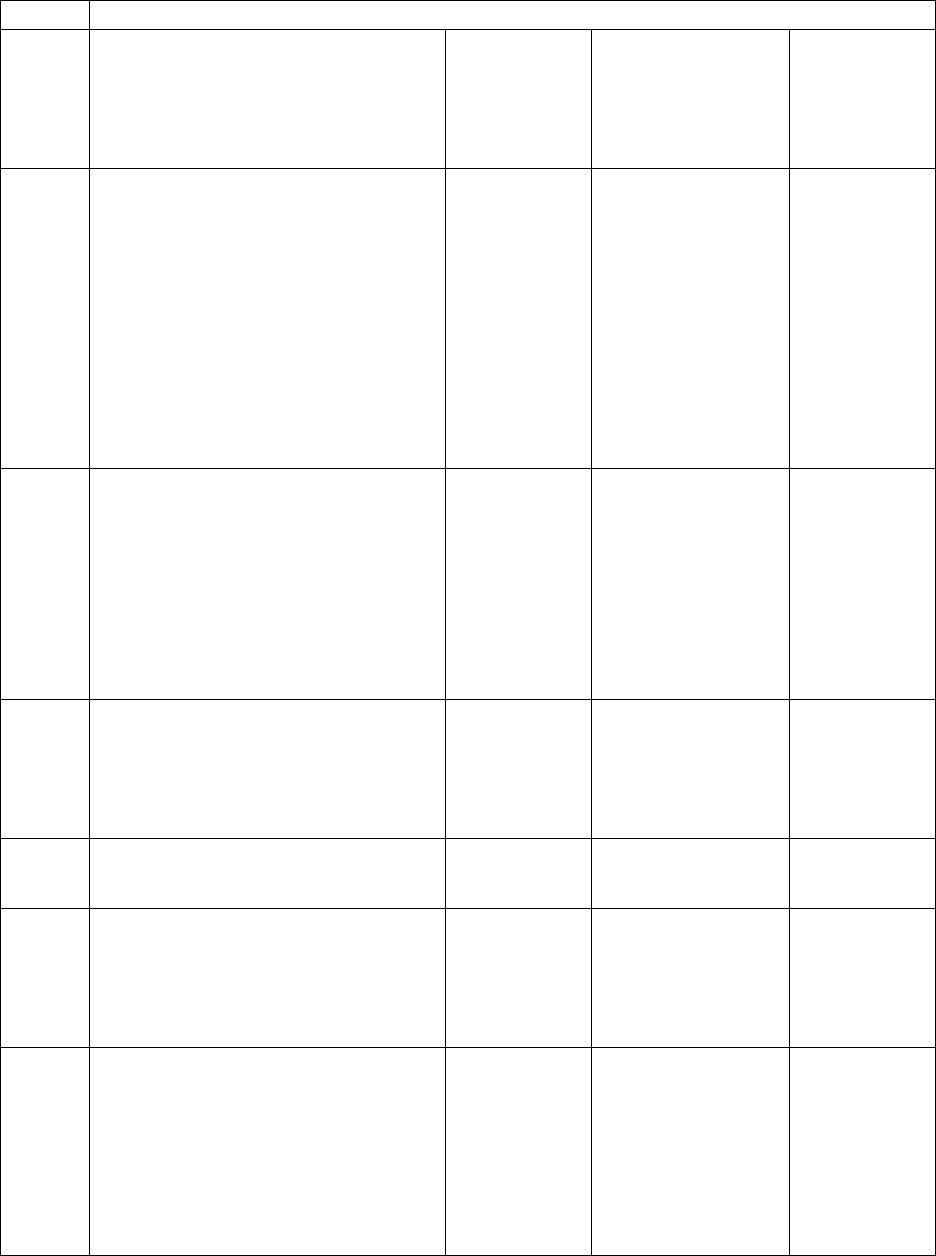
IA
Envelope Inspections
IA1
Protection of exposed foundation
insulation: Insulation must be visually
inspected to verify proper protection
where applied to the exterior of basement
or cellar walls, crawl-space walls and/or
the perimeter of slab-on-grade floors.
Prior to
backfill
Approved
construction
documents
R303.2.1
IA2
Insulation placement and R-values:
Installed insulation for each component of
the conditioned space envelope and at
junctions between components, including
thermal bridges and heated slab
insulation, must be visually inspected to
ensure that the R-values are marked, that
such R-values conform to the R-values
identified in the construction documents
and that the insulation is properly
installed. Certifications for unmarked
insulation must be similarly visually
inspected.
As required to
verify
continuous
enclosure
while walls,
ceilings and
floors are open
Approved
construction
documents
R303.1,
R303.2,
R402.1.2,
R402.2,
Table
R402.4.1.1,
R402.4.4,
R402.6
IA3
Fenestration and door U-factor and
product ratings: U-factors, SHGC and
VT values of installed fenestration must
be verified by visual inspection for
conformance with the U-factors, SHGC
and VT values identified in the
construction drawings, either by verifying
the manufacturer’s NFRC labels or, where
not labeled, using the ratings in ECC
Tables R303.1.3(1), (2), and (3).
As required
during
installation
Approved
construction
drawings; NFRC 100,
NFRC 200,
ANSI/DASMA 105
R303.1,
R303.1.3,
R402.1,
R402.3,
R402.5
IA4
Fenestration air leakage: Windows,
skylights and sliding glass doors, except
site-built windows, skylights and doors,
must be visually inspected to verify that
installed assemblies are listed and labeled
to the referenced standard.
As required
during
installation
NFRC 400,
AAMA/WDMA/CSA
101/I.S.2/A440
R402.4.3
IA5
Fenestration areas: Dimensions of
windows, doors and skylights must be
verified by visual inspection.
Prior to final
construction
inspection
Approved
construction
documents
R402.3
IA6
Air barrier – visual inspection:
Openings and penetrations in the building
envelope, including site-built fenestration
and doors, must be visually inspected to
verify that they are properly sealed, in
accordance with Table R402.4.1.1.
As required
during
envelope
construction
Approved
construction
documents; ASTM
E283;
R402.4.1,
R402.4.4,
R402.4.5,
R402.4.6
IA7
Air barrier – testing: Testing must be
performed in accordance with section
ECC R402.4.1.2 or R402.4.1.3 and shall
be accepted if the building meets the
requirements detailed in such section.
Test results must be retained in
accordance with the provisions of Title 28
of the Administrative Code. Testing must
be performed by a third-party independent
Prior to final
construction
inspection
ASTM E779;
ASTM 1827;
ANSI/BOMA Z65.1;
RESNET/ICC 380;
Approved
construction
documents
R402.4.1.2,
R402.4.1.3
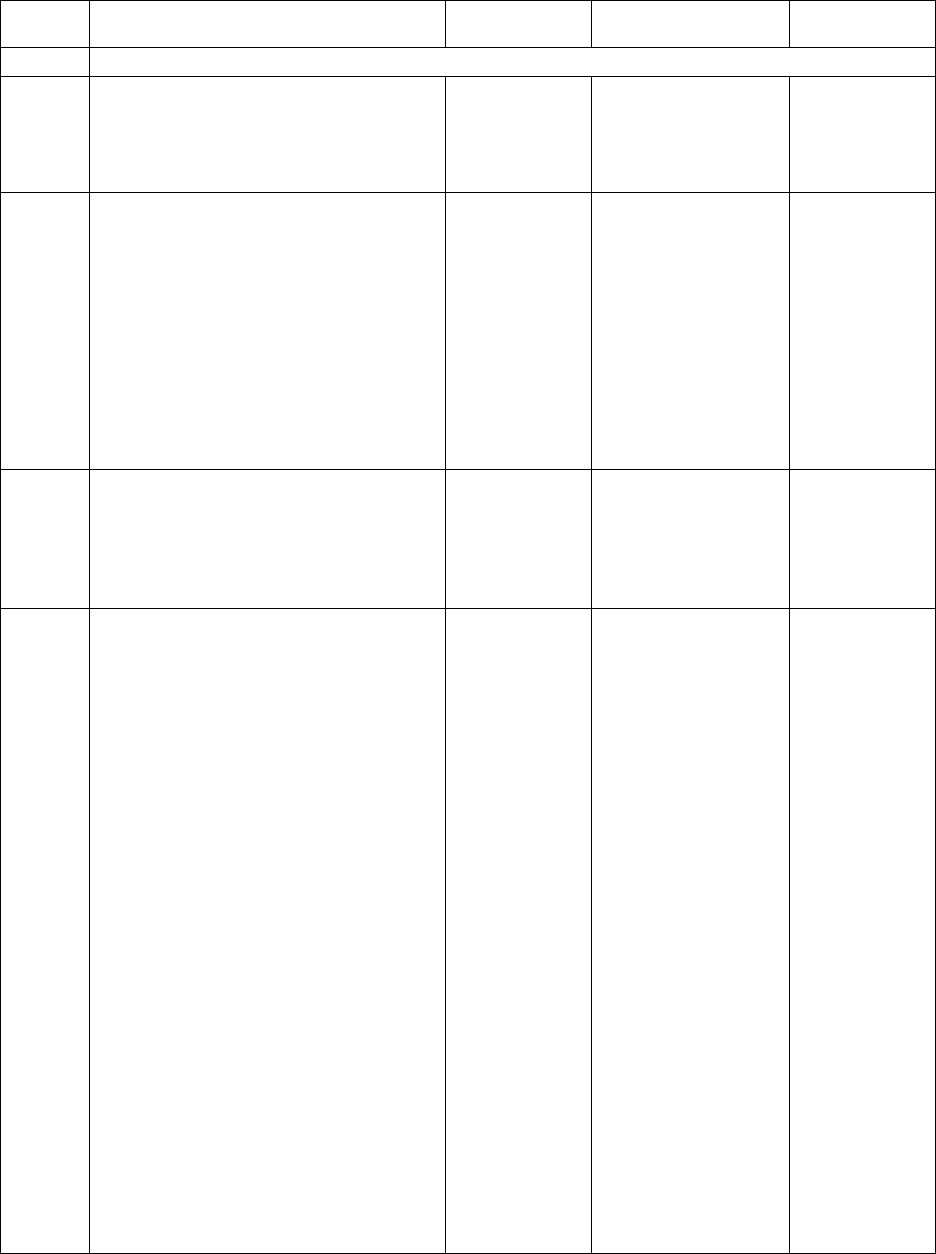
of the contractor and acceptable to the
department.
IB
Mechanical and Plumbing Inspections
IB1
Fireplaces: Provision of combustion air
and tight-fitting fireplace doors must be
verified by visual inspection.
Prior to final
construction
inspection
Approved
construction
documents; UL 127
R402.4.2, BC
2111; MC
Chapters 7, 8,
9; FGC
Chapter 6
IB2
Ventilation and air distribution system:
Ventilation system must be verified to
comply with the ERV/HRV requirements
or balanced ventilation system.
Whole-house ventilation fan efficacy
must be verified by visual inspection.
Not less than 20% of installed automatic
or gravity dampers, and a minimum of one
of each type, must be visually inspected
and physically tested for proper operation.
Prior to final
construction
inspection
Approved
construction
documents;
HVI Standard 916;
ANSI/ACCA 9Qlvp-
2016
R403.6,
R403.8, C403,
C404
IB3
HVAC and service water heating
equipment: Heating and cooling
equipment must be verified by visual
inspection for proper sizing. Pool heaters
and covers shall be verified by visual
inspection.
Prior to final
plumbing and
construction
inspection
ACCA Manuals J and
S; Approved
construction
documents, including
energy analysis
R403.7,
R403.8,
R403.10,
R403.11,
R403.12,
C403, C404
IB4
HVAC and service water heating
system controls: System controls must
be inspected to verify that each dwelling
is provided with at least one individual
programmable thermostat with
capabilities as described in ECC
R403.1.1, and that such controls are set
and operate as specified in ECC R403.1.1.
Controls for supplementary electric-
resistance heat pumps must be inspected
to verify that such controls prevent
supplemental heat operation when the
heat pump compressor can meet the
heating load.
Controls for whole-house mechanical
ventilation (balanced ventilation option)
shall enable manual override.
Controls for snow- and ice-melting
systems and pools must be inspected for
proper operation. Not less than 20% or
one of each control type, whichever is
more, must be inspected.
Controls for turning off circulating hot
water pumps when not in use must be
Prior to final
electrical and
construction
inspection
Approved
construction
documents, including
control system
narratives
R403.1,
R403.2,
R403.5, C403,
C404
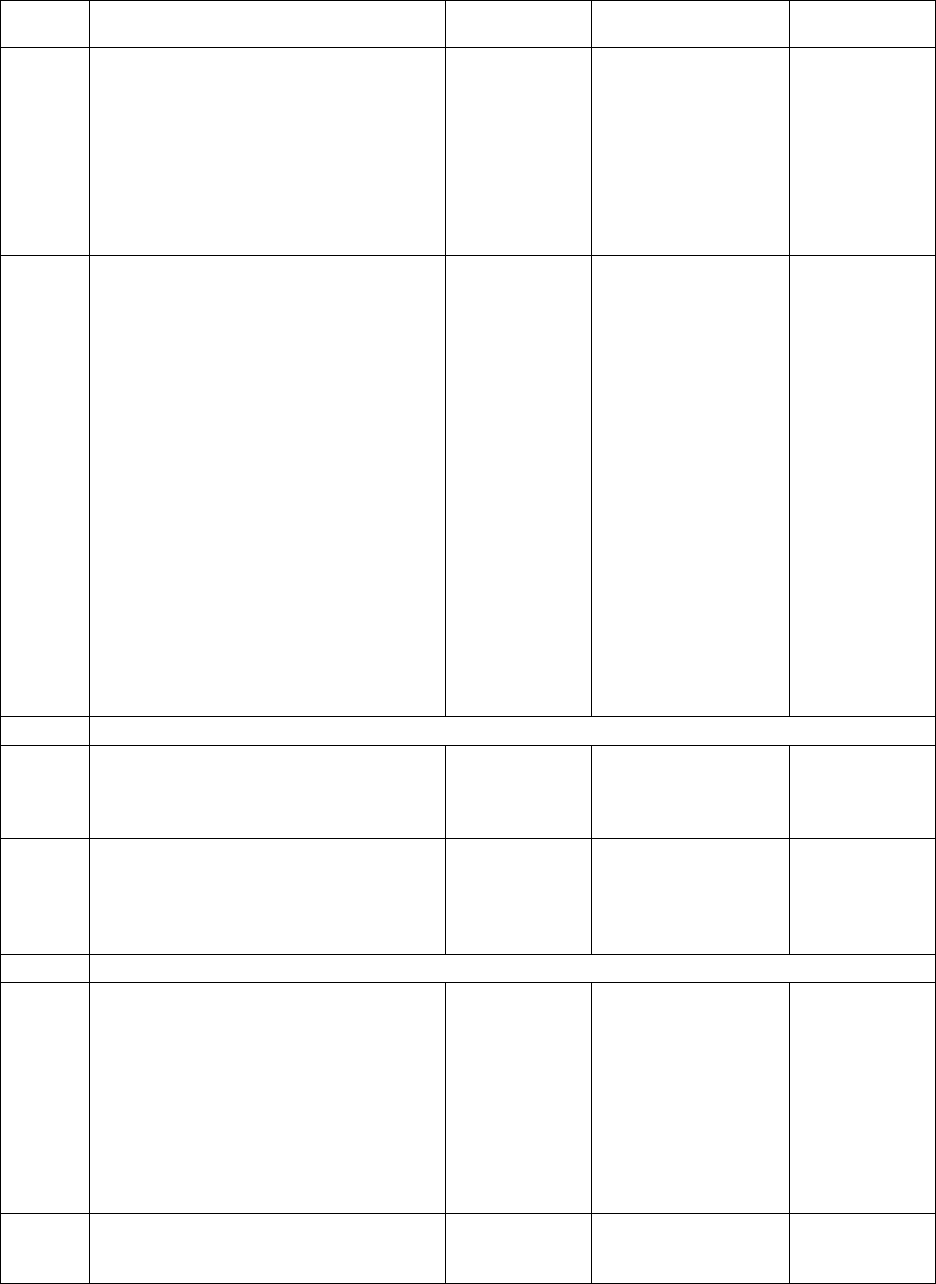
inspected for an automatic or manual
switch.
IB5
HVAC and service water piping design
and insulation: Installed piping
insulation must be visually inspected to
verify correct insulation placement and
values.
Service hot water distribution systems
must be inspected to verify the supply of
heated water.
Prior to closing
ceilings and
walls and prior
to final
construction
inspection
Approved
construction
documents; NYC
Mechanical Code
R403.4,
R403.5,
R403.8, C403,
C404; MC
1204
IB6
Duct leakage testing, insulation and
design: All ductwork and air handlers
must be inspected to verify that the system
is entirely within conditioned space.
Ducts must be verified by visual
inspection for proper sizing.
Ducts, air handlers, filter boxes and
building cavities used as ducts must be
visually inspected for proper sealing.
For alterations, where the air handler
and/or some ductwork is in unconditioned
space, duct-leakage testing must be
performed either after rough-in or post-
construction to ensure compliance with
ECC R403.3.3 and R403.3.4. Not less
than 20% of such ductwork must be
tested.
Prior to closing
ceilings and
walls and prior
to final
construction
inspection
Approved
construction
documents;
ASHRAE 193;
ASHRAE Manual D
R403.3, C403;
MC603.9
IC
Electrical Power and Lighting Systems
IC1
Metering: The presence and operation of
individual meters must be verified by
visual inspection for all dwelling units.
Prior to final
electrical and
construction
inspection
Approved
construction
documents
R404.2
IC2
Interior lighting power: Lamps in
permanently installed lighting fixtures
must be visually inspected to verify
compliance with high-efficacy
requirements.
Prior to final
electrical and
construction
inspection
Approved
construction
documents
R404.1
ID
Other
ID1
Maintenance information: Maintenance
manuals for equipment and systems
requiring preventive maintenance must be
reviewed for applicability to installed
equipment and systems before such
manuals are provided to the owner.
Labels required for such equipment or
systems must be inspected for accuracy
and completeness.
Prior to sign-
off or issuance
of Certificate
of Occupancy
Approved
construction
documents
R303.3
ID2
Permanent certificate: The installed
permanent certificate must be visually
Prior to final
plumbing,
electrical
Approved
construction
documents
R401.3,
1RCNY 5000-
01(g)(4)
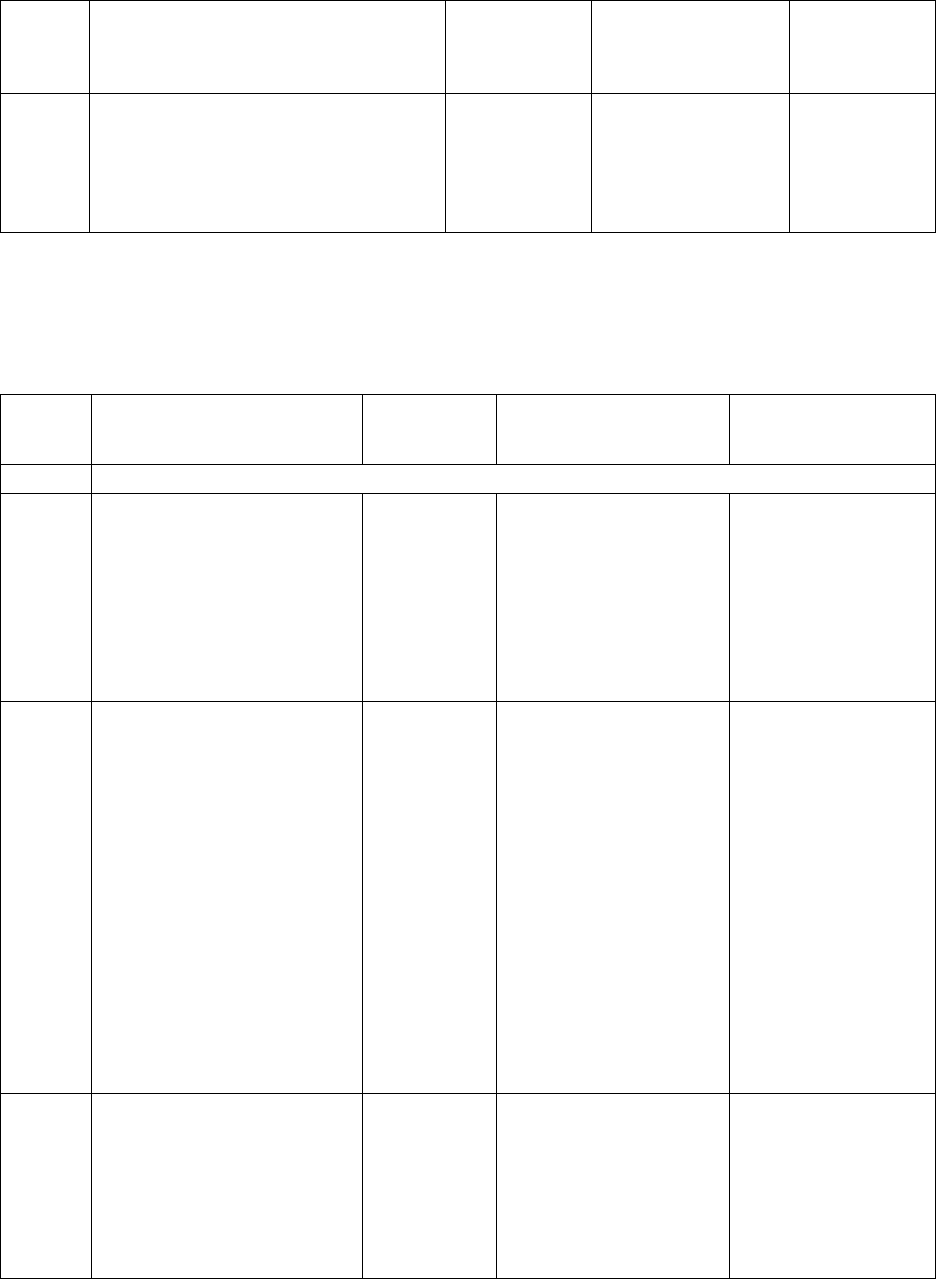
inspected for location, completeness and
accuracy.
and/or
construction
inspection as
applicable
ID3
Electric vehicle service equipment
requirements: Electric vehicle outlet or
conduit and electrical service reserved
space must be visually inspected to verify
compliance. Location must be noted on
the permanent certificate.
Prior to final
construction
inspection
Approved
construction
documents
R404.3
(2) Commercial buildings. The progress inspections and tests described in Table II shall be performed for
buildings regulated by either ECC Chapters C2 through C6 or ASHRAE 90.1 as applicable.
TABLE II – PROGRESS INSPECTIONS FOR ENERGY CODE COMPLIANCE – COMMERCIAL
BUILDINGS
Inspection/Test
Periodic
(minimum)
Reference Standard (See
ECC Chapter C6) or
Other Criteria
ECC or Other
Citation
IIA
Envelope Inspections
IIA1
Protection of exposed
foundation insulation:
Insulation must be visually
inspected to verify proper
protection where applied to the
exterior of basement or cellar
walls, crawl-space walls and/or
the perimeter of slab-on-grade
floors.
As required
during
foundation
work and
prior to
backfill
Approved construction
documents, ASTM C272
C303.2.1; ASHRAE
90.1 – 5.8.1, 5.9
IIA2
Insulation placement and R-
values: Installed insulation for
each component of the
conditioned space envelope
and at junctions between
components, including thermal
bridges and heated slab
insulation, must be visually
inspected to ensure that the R-
values are marked, that such R-
values conform to the R-values
identified in the construction
documents and that the
insulation is properly installed.
Certifications for unmarked
insulation also be visually
inspected.
As required
to verify
continuous
enclosure
while walls,
ceilings and
floors are
open
Approved construction
documents
C303.1, C303.2,
C402.1, C402.2,
C402.6, C406;
ASHRAE 90.1 –5.5,
5.6, 5.8, 5.9, 11 or
Appendix G,
Appendix I
IIA3
Fenestration and door U-
factor and product ratings:
U-factors, SHGC and VT
values of installed fenestration
must be visually inspected for
conformance with the U-
factors, SHGC and VT values
identified in the construction
As required
during
installation
Approved construction
documents; NFRC 100,
NFRC 200, NFRC 300,
ANSI/DASMA 105,
ASTM E972
C303.1, C303.1.3,
C402.1.4, C402.4,
C406;
ASHRAE 90.1 –5.4.2,
5.5, 5.6, 5.8.2, 5.9, 11
or Appendix G,
Appendix I
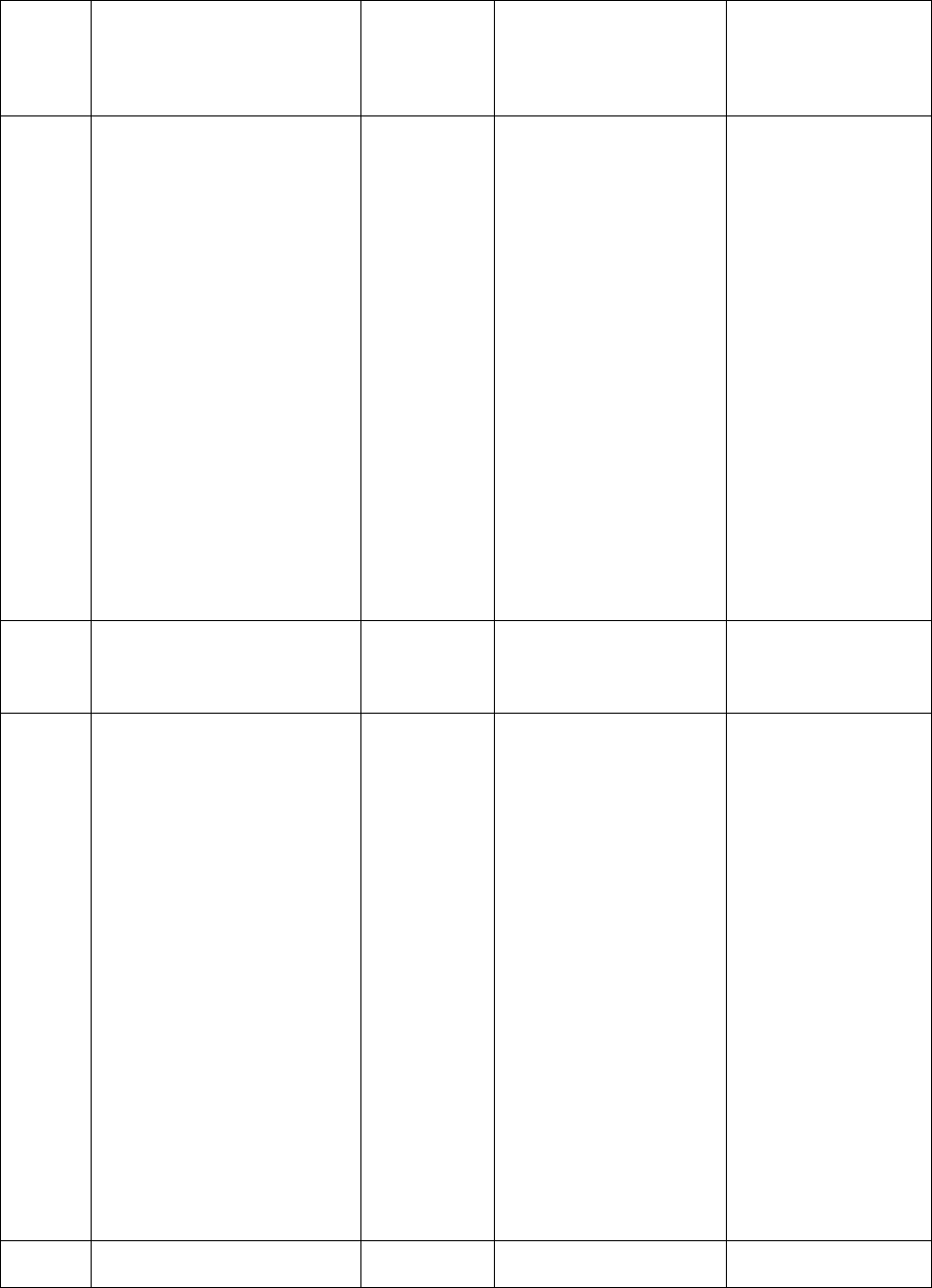
drawings by verifying the
manufacturer’s NFRC labels
or, where not labeled, using the
ratings in ECC Tables
C303.1.3(1), (2) and (3).
IIA4
Fenestration air leakage:
Windows and door assemblies,
except site-built windows
and/or doors, must be visually
inspected to verify that
installed assemblies are listed
and labeled by the
manufacturer to the referenced
standard.
For curtain wall, storefront
glazing, commercial entrance
doors and revolving doors, the
testing reports must be
reviewed to verify that the
installed assembly complies
with the standard cited in the
approved plans.
Weatherseals at loading docks
must be visually verified.
As required
during
installation;
prior to final
construction
inspection
NFRC 400,
AAMA/WDMA/CSA
101/I.S.2/A440; ASTM
E283; ANSI/DASMA
105
C402.5.2, C402.5.6;
ASHRAE 90.1 –
5.4.3.2, 5.4.3.3, 5.8.2,
5.9
IIA5
Fenestration areas:
Dimensions of windows, doors
and skylights must be verified
by visual inspection.
Prior to final
construction
inspection
Approved construction
documents
C402.4; ASHRAE
90.1 – 5.4, 5.5.4, 5.6,
5.9, 11 or Appendix G
IIA6
Air barrier visual inspection:
Openings and penetrations in
the building envelope,
including site-built fenestration
and doors, must be visually
inspected to verify that a
continuous air barrier around
the envelope forms an air-tight
enclosure.
The progress inspector must
visually inspect to verify that
materials and/or assemblies
have been tested and meet the
requirements of the respective
standards, or must observe the
testing of the building and/or
assemblies and verify that the
building and/or assemblies
meet the requirements of the
standard, in accordance with
the standard(s) cited in the
approved plans.
As required
during
construction
Approved construction
documents; ASTM
E2178, ASTM E2357,
ASTM E1677, ASTM
E779, ASTM E283.
C402.5; ASHRAE
90.1 – 5.4.3.1, 5.4.3.5,
5.9
IIA7
Air barrier testing: Testing
must be performed in
As required
during
Approved construction
documents; ASTM E 779,
C402.5, C402.5.1.3,
C406; ASHRAE 90.1
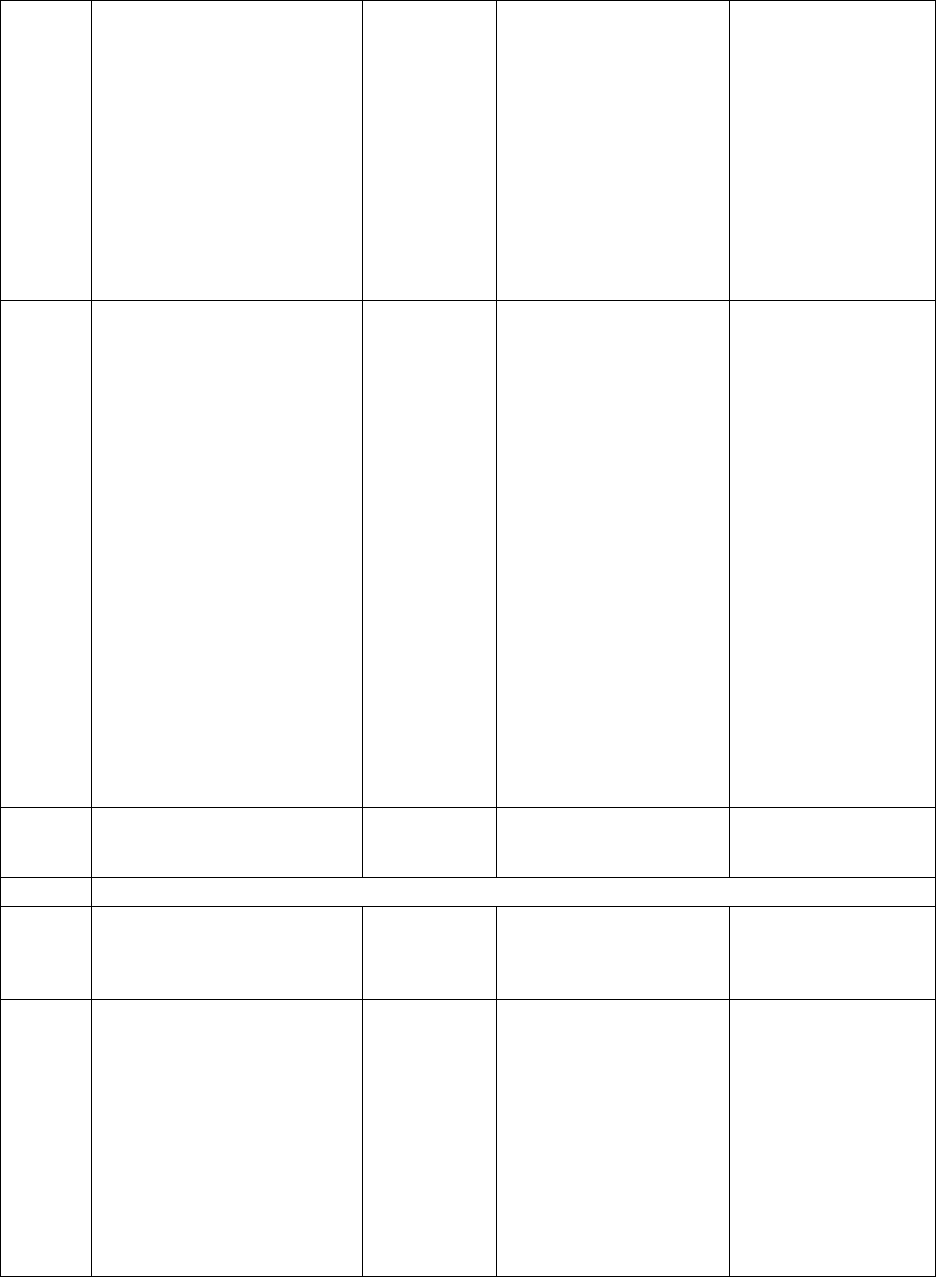
accordance with section ECC
C402.5.1.3.1 or ASHRAE 90.1
section 5.4.3.1.3, and shall be
accepted if the building meets
the requirements detailed in
such section. Test results shall
be retained in accordance with
the provisions of Title 28 of the
Administrative Code. Testing
must be performed by a third-
party independent of the
contractor and acceptable to the
department.
construction,
or prior to
final
construction
inspection
ANSI/BOMA Z65.1,
ASTM E3158,
RESNET/ICC 380
– 5.4.3.1.3, 5.9,
Appendix I
IIA8
Air barrier continuity plan
testing:
Each unique air barrier joint or
seam must be tested or
inspected for compliance.
Documentation includes the
method of test performed on
each unique air barrier joint or
seam and the results of the test.
If an air barrier joint or seam
has a deficiency, the deficiency
must be noted, and retested
until it complies with the
testing requirements. Test
results must be retained in
accordance with the provisions
of Title 28 of the
Administrative Code.
Testing must be performed by a
third-party independent of the
contractor and acceptable to the
department.
As required
during
construction
Approved construction
documents; ASTM E779,
ASTM E1186, ASTM
E2813, ASTM E3158
C402.5.1.3;
ASHRAE 90.1 –
5.4.3.1.3, 5.9
IIA9
Vestibules: Required entrance
vestibules must be visually
inspected for proper operation.
Prior to final
construction
inspection
Approved construction
documents
C402.5.7; ASHRAE
90.1 – 5.4.3.4
IIB
Mechanical and Service Water Heating Inspections
IIB1
Fireplaces: Provision of
combustion air and tight-fitting
fireplace doors must be verified
by visual inspection.
Prior to final
construction
inspection
Approved construction
documents; UL 127
C402.2.8; BC 2111;
MC Chapters 7, 8, 9;
FGC Chapter 6
IIB2
Shutoff dampers: Dampers
for stair and elevator shaft
vents and other outdoor air
intakes and exhaust openings
integral to the building
envelope must be visually
inspected to verify that such
dampers, except where
permitted to be gravity
dampers, comply with
approved construction
drawings.
As required
during
installation
Approved construction
documents; AMCA 500D
C402.5.5,
C403.7.7; ASHRAE
90.1 – 6.4.3.4
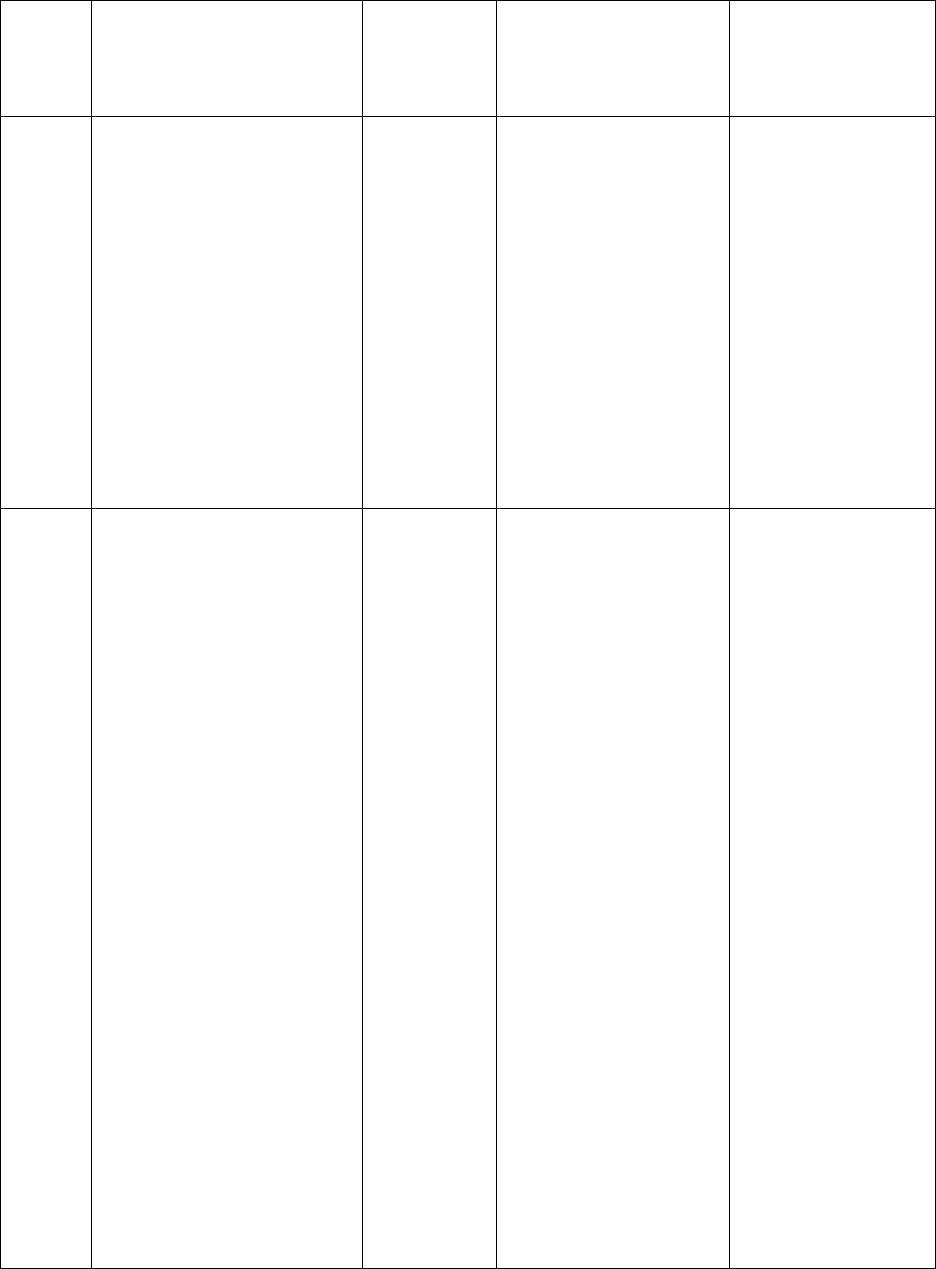
Manufacturer’s literature must
be reviewed to verify that the
product has been tested and
found to meet the standard.
IIB3
HVAC-R, commercial
kitchen equipment, and
service water heating
equipment: Equipment sizing,
efficiencies, pipe sizing and
other performance factors of all
major equipment units, as
determined by the applicant of
record, and no less than 15% of
minor equipment units, must be
verified by visual inspection
and, where necessary, review
of manufacturer’s data.
Pool heaters and covers must
be verified by visual
inspection.
Prior to final
plumbing and
construction
inspection
Approved construction
documents, ASHRAE
183, ASHRAE HVAC
Systems and Equipment
Handbook
C403.1, C403.2,
C403.3, C403.7.5,
C404.2, C404.5,
C404.9, C404.10,
C406; ASHRAE 90.1
– 6.3, 6.4, 6.5, 6.7,
7.4, 7.5, 7.8, 10.4.6,
Appendix I
IIB4
HVAC-R and service water
heating system controls: No
less than 20% of each type of
required controls must be
verified by visual inspection
and tested for functionality and
proper operation. Such
controls must include, but are
not limited to:
▪ Thermostatic
▪ Off-hour
▪ Zones
▪ Freeze
protection/Snow- and
ice-melt system
▪ Ventilation System
and Fan Controls
▪ Energy recovery
systems
▪ Kitchen/lab exhaust
systems
▪ Fan systems serving
single and multiple
zones
▪ Outdoor heating
systems
▪ HVAC control in
hotel/motel guest
rooms
▪ Air/Water
Economizers &
controls
▪ Hydronic systems
After
installation
and prior to
final
electrical and
construction
inspection,
except that
for controls
with
seasonally
dependent
functionality,
such testing
must be
performed
before sign-
off for
issuance of a
Final
Certificate of
Occupancy
Approved construction
documents, including
control system narratives;
ASHRAE Guideline 1:
The HVAC
Commissioning Process
where applicable
C403, C404, C406,
ASHRAE 90.1 – 6.3,
6.4, 6.5, 6.6, 7.4, 7.5,
Appendix I
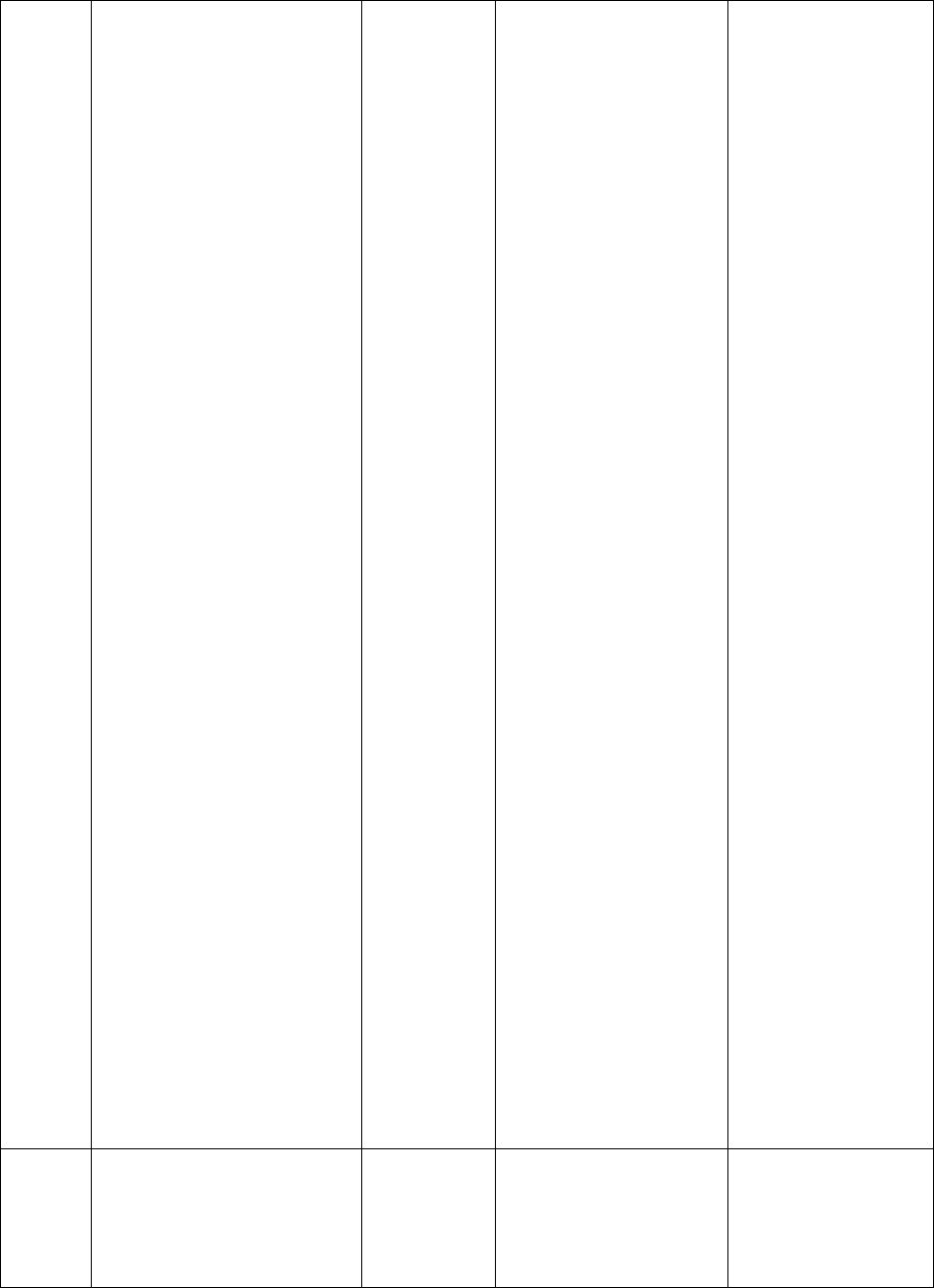
▪ Heat rejection
systems
▪ Hot gas bypass
limitation
▪ Refrigeration systems
▪ Door switches
▪ Computer room
systems
▪ Service water heating
systems
▪ Pool heater and time
switches
Controls with seasonally
dependent functionality:
Controls whose complete
operation cannot be
demonstrated due to prevailing
weather conditions typical of
the season during which
progress inspections will be
performed shall be permitted to
be signed off for the purpose of
a Temporary Certificate of
Occupancy with only a visual
inspection, provided, however,
that the progress inspector must
perform a supplemental
inspection where the controls
are visually inspected and
tested for functionality and
proper operation during the
next immediate season
thereafter.
The owner must provide full
access to the progress inspector
within two weeks of the
progress inspector’s request for
such access to perform the
progress inspection.
For such supplemental
inspections, the Department
must be notified by the
approved progress inspection
agency of any unresolved
deficiencies in the installed
work within 180 days of such
supplemental inspection.
IIB5
HVAC-R and service water
piping design and insulation:
Installed piping insulation must
be visually inspected to verify
proper insulation placement
and values.
After
installation
and prior to
closing
shafts,
Approved construction
documents;
C403.11, C404.4,
C404.5; MC 603.9;
ASHRAE 90.1 – 6.3,
6.4.4, 6.8.2, 6.8.3;
7.4.3
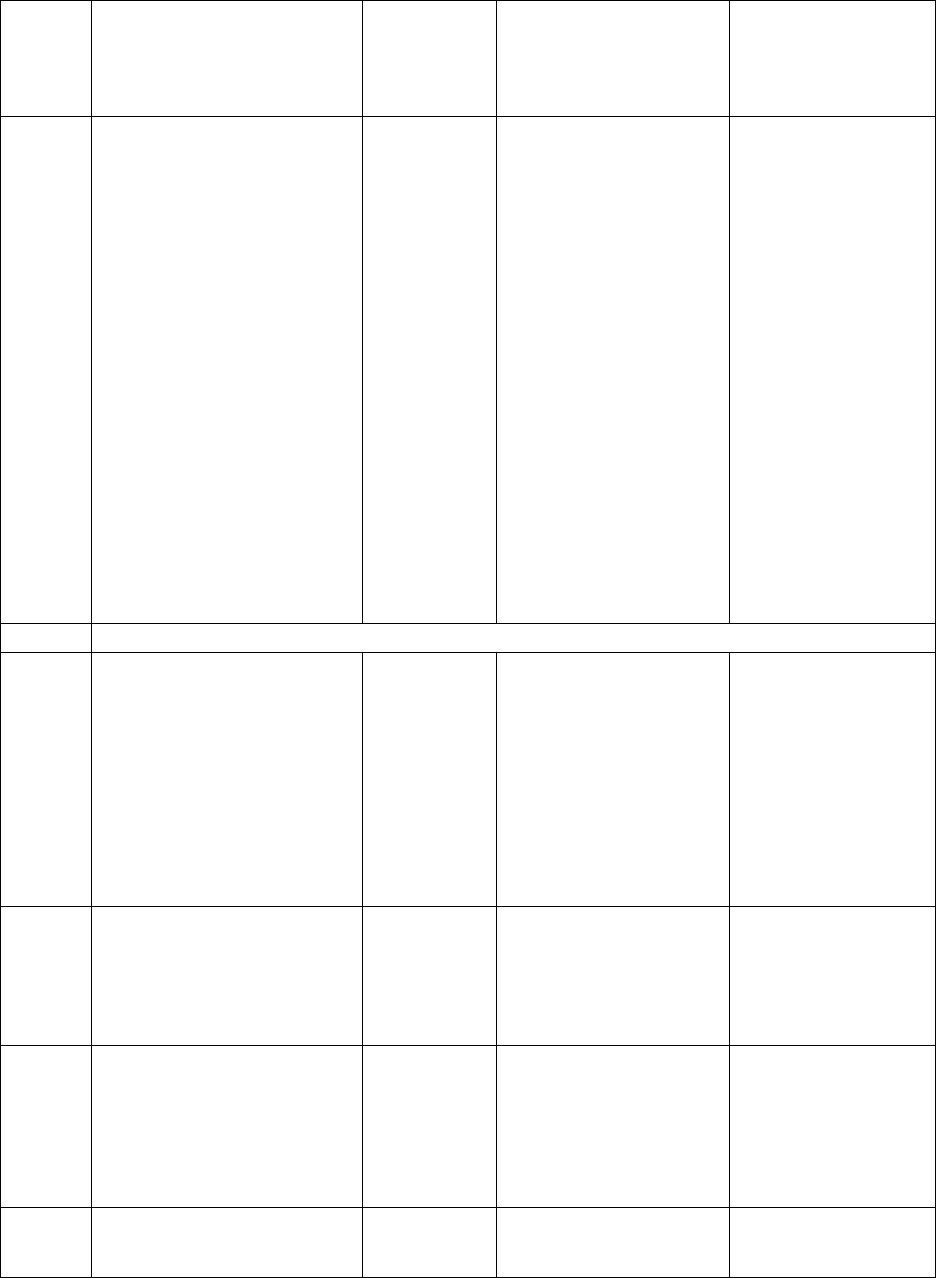
Service hot water distribution
systems must be inspected to
verify the supply of heated
water.
ceilings and
walls
IIB6
Duct leakage testing,
insulation and design: For
duct systems designed to
operate at static pressures in
excess of 3 inches w.g. (747
Pa), representative sections, as
determined by the progress
inspector, totaling at least 25%
of the duct area, must be tested
to verify that actual air leakage
is below allowable amounts.
Installed duct insulation must
be visually inspected to verify
proper insulation placement
and values.
Joints, longitudinal and
transverse seams and
connections in ductwork must
be visually inspected for proper
sealing.
After
installation
and sealing
and prior to
closing
shafts,
ceilings and
walls
Approved construction
documents; SMACNA
HVAC Air Duct Leakage
Test Manual; SMACNA
Duct Construction
Standards, Metal and
Flexible
C403.11; ASHRAE
90.1 – 6.4.4.2.2
IIC
Electrical Power and Lighting Systems
IIC1
Metering: The presence and
operation of all required
meters for monitoring total
electrical energy usage and/or
total fuel use, system energy
usage, tenant energy usage, or
electrical energy usage in the
building, in individual
dwelling units, or in tenant
spaces must be verified by
visual inspection.
Prior to final
electrical and
construction
inspection
Approved construction
documents
C405.5, C405.11,
C405.12; ASHRAE
90.1 – 8.4.3, 8.4.5,
8.4.6, 10.4.5
IIC2
Lighting in dwelling units:
Lamps in permanently installed
lighting fixtures must be
visually inspected to verify
compliance with high-efficacy
requirements.
Prior to final
electrical and
construction
inspection
Approved construction
documents
C405.1; ASHRAE
90.1 – 9.1.1
IIC3
Interior lighting power:
Installed lighting must be
verified for compliance with
the lighting power allowance
by visual inspection of fixtures,
lamps, ballasts and
transformers.
Prior to final
electrical and
construction
inspection
Approved construction
documents
C405.3, C406;
ASHRAE 90.1 –9.1,
9.2, 9.5, 9.6, 9.7;
1RCNY §101-
07(c)(3)(v)(C)4,
Appendix I
IIC4
Exterior lighting power:
Installed lighting must be
verified for compliance with
Prior to final
electrical and
Approved construction
documents
C405.4; ASHRAE
90.1 –9.4.2; 1RCNY
§101-07(c)(3)(v)(C)4
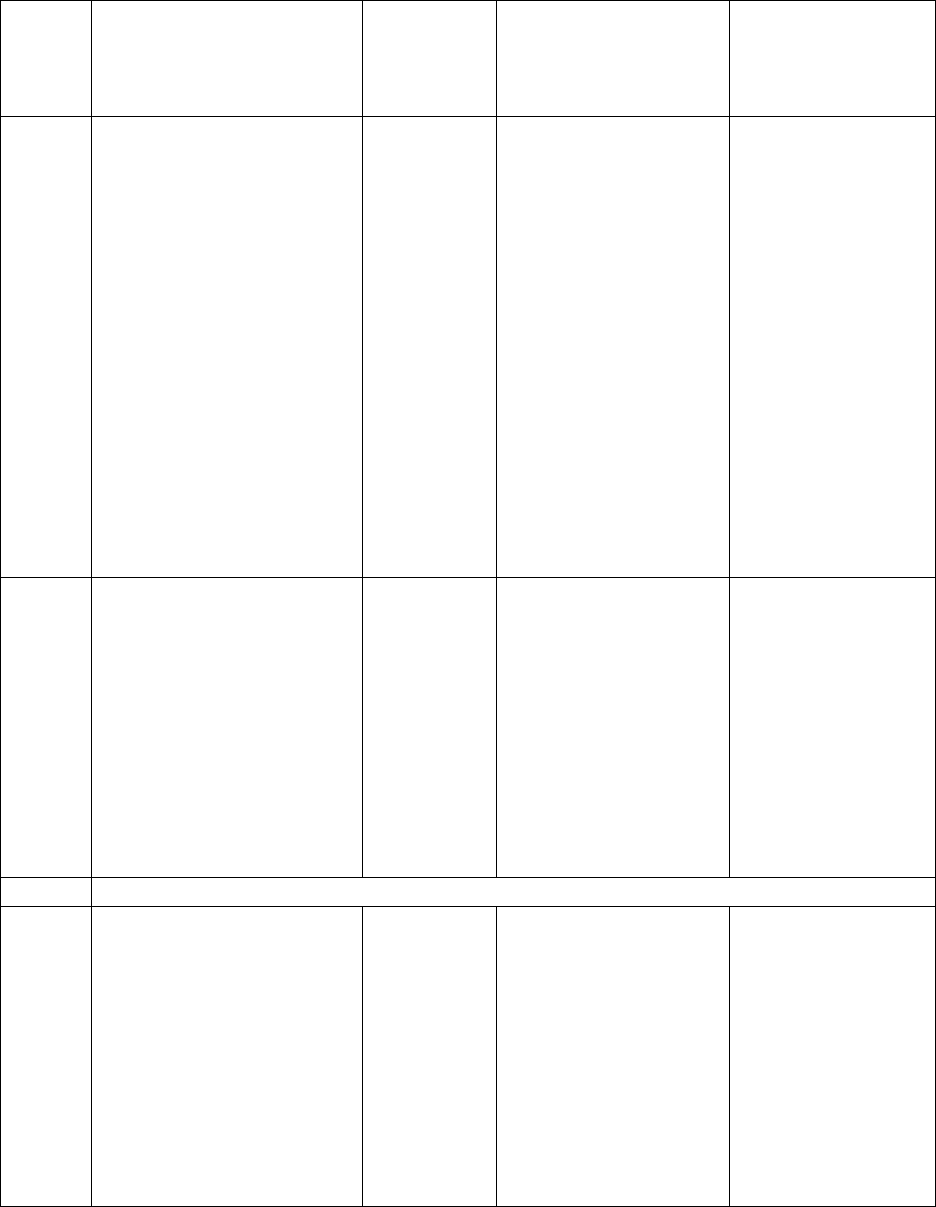
source efficacy and/or the
lighting power allowance by
visual inspection of fixtures,
lamps, ballasts and relevant
transformers.
construction
inspection
IIC5
Lighting controls: Each type
of required lighting controls,
including:
▪ occupant sensors
▪ manual interior lighting
controls
▪ light-reduction controls
▪ automatic lighting shut-
off
▪ daylight zone controls
▪ sleeping unit controls
▪ exterior lighting controls
▪ egress illumination
controls
must be verified by visual
inspection and tested for
functionality and proper
operation.
Prior to final
electrical and
construction
inspection
Approved construction
documents, including
control system narratives
C405.2, C406;
ASHRAE 90.1 –
9.4.1, 9.4.3, 9.7,
Appendix I
IIC6
Electric motors and
elevators: Where required by
the construction documents for
energy code compliance, motor
listing or labels be visually
inspected to verify that they
comply with the respective
energy requirements in the
construction documents.
Elevators and escalators must
be inspected for compliance
with regenerative drive
requirements.
Prior to final
electrical and
construction
inspection
Approved construction
documents
C403.8, C405.6,
C405.7, C405.8,
C405.9; ASHRAE
90.1 – 8.4.4, 10.4,
10.8
IID
Other
IID1
Maintenance information:
Maintenance manuals for
mechanical, service hot water
and electrical equipment and
systems requiring preventive
maintenance must be reviewed
for applicability to installed
equipment and systems before
such manuals are provided to
the owner. Labels required for
such equipment or systems
mustl be inspected for
accuracy and completeness.
Prior to sign-
off or
issuance of
Final
Certificate of
Occupancy
Approved construction
documents, including
electrical drawings where
applicable; ASHRAE
Guideline 4: Preparation
of Operating and
Maintenance
Documentation for
Building Systems
C408.11, C408.2.5.2,
C408.3.2; ASHRAE
90.1 – 4.2.2.3, 6.7.2.2,
6.7.2.3.5.2, 8.7.2,
9.4.3.2.2, 9.7.2.2
(i) Energy Analysis of Constructed Conditions. In accordance with Section 28-104.3 of the Administrative
Code and section ECC 103.4, if constructed work differs from the last-approved full energy analysis, an as-
built energy analysis shall be submitted to the Department, listing the actual values used in the building for
all applicable Energy Code-regulated items and demonstrating that the building complies with the Energy
Code. Such energy analysis shall be signed and sealed by a registered design professional. The progress
inspector shall certify that to the best of his or her knowledge and belief the building as built complies with
such signed and sealed energy analysis and construction drawings for energy code compliance; where no
trade-offs have been used among disciplines, more than one registered design professional may sign and seal
the elements of the energy analysis. The energy analysis shall be approved or accepted by the Department
prior to sign-off.
